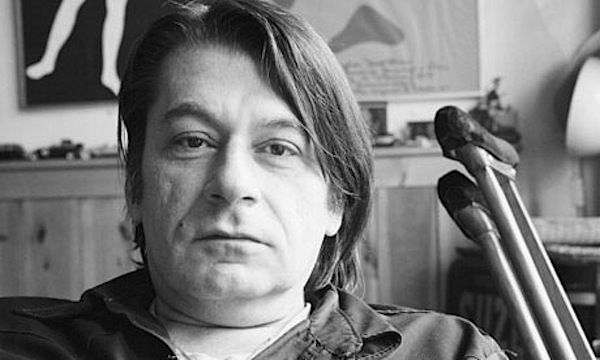I SAW STEVE DWOSKIN’S obit the other day in the New York Times. It reminded me of the ten days I lived in his third floor attic, a part of his house he knew only in memory. When he went from the crutches he always used (due to childhood polio) to a wheelchair, he became an exile in much of his own home.

The Filmmaker Who Was London for Me: A Tribute to Steve Dwoskin
I would return at night after exploring the Victorian remnants of the West End, or taking the Thames to Battersea because I had fallen in love with the cold sprawl of the name when my bipolar British client in New York spoke of his workdays at BBC with Michael Palin. Dwoskin battled depression openly. But I could never wait to get back to his screening room on the second floor (he had an elevator built like an umbilical cord to take him there), where he cut and crafted and screened his films.
His obituary called him “a prominent member of the avant-garde underground, first in his native New York in the early 1960s and long afterward in London, where he lived since 1964.” I knew none of this when I stood at his gate. Our mutual friend in New York said simply, “He makes underground films. I think he will put you up.”
I grew up in the gray, unwieldy Bronx where the Mt. Eden Theatre, lit up at night like an ocean liner, held the entire hidden world symbolized by the oceanic scoop of blonde hair that covered Veronica Lake’s eye. It was a much larger space than Dwoskin’s, with its blackened immensity that even housed an organ during the days of silent films. But in a way it was the same space. A launching pad for my mind to take my body anywhere.
“What do you want to see?” he’d ask me like a waiter taking an order. I’d say, feeling odd, “Intoxicated by my illness.” The film is shot in a London ICU ward. Dwoskin is laid out lifeless on a bed, with pneumonia (one of his regular bouts of pneumonia), near death, his inert body photographed by a friend with a camera, doing the filming for him.
His strong clammy face is poised between worlds. When he got better, he filmed an old dying man in the bed across from him. When he got out, he filmed a bondage nurse in nylons with stiletto heels from the closet of the Angel of Death, caressing him tenderly.
I saw a man battling death with his camera, with all that we call a life. A kind of crippled gladiator. Fighting, even unconscious, to send me back signals from the deep. After Dwoskin died, I came across this quote that I took as being meant for me:
“My film-making is better suited to be watched by a single viewer. I take the viewer one by one, unlike Hollywood cinema which aims to amalgamate the audience.”